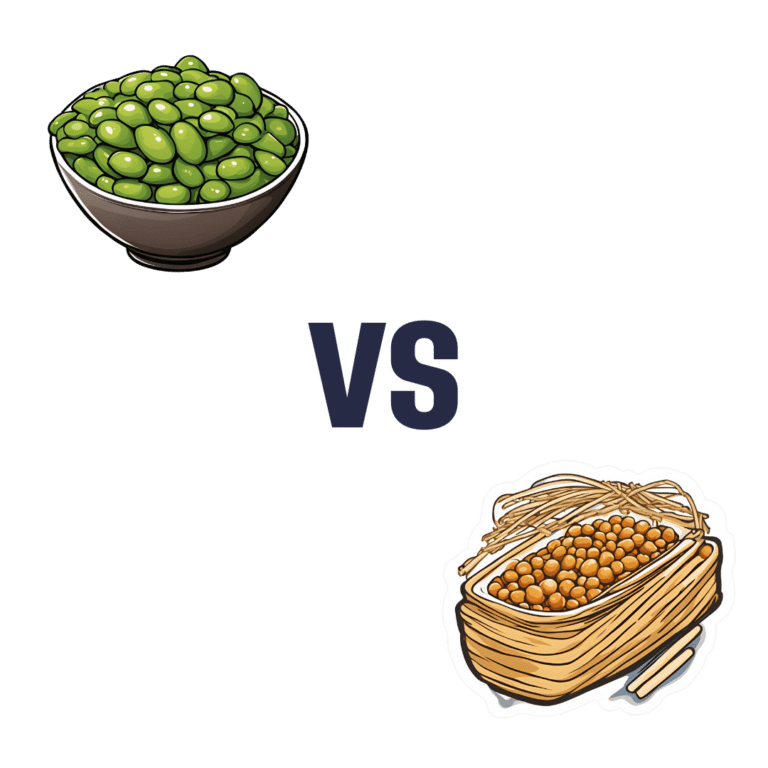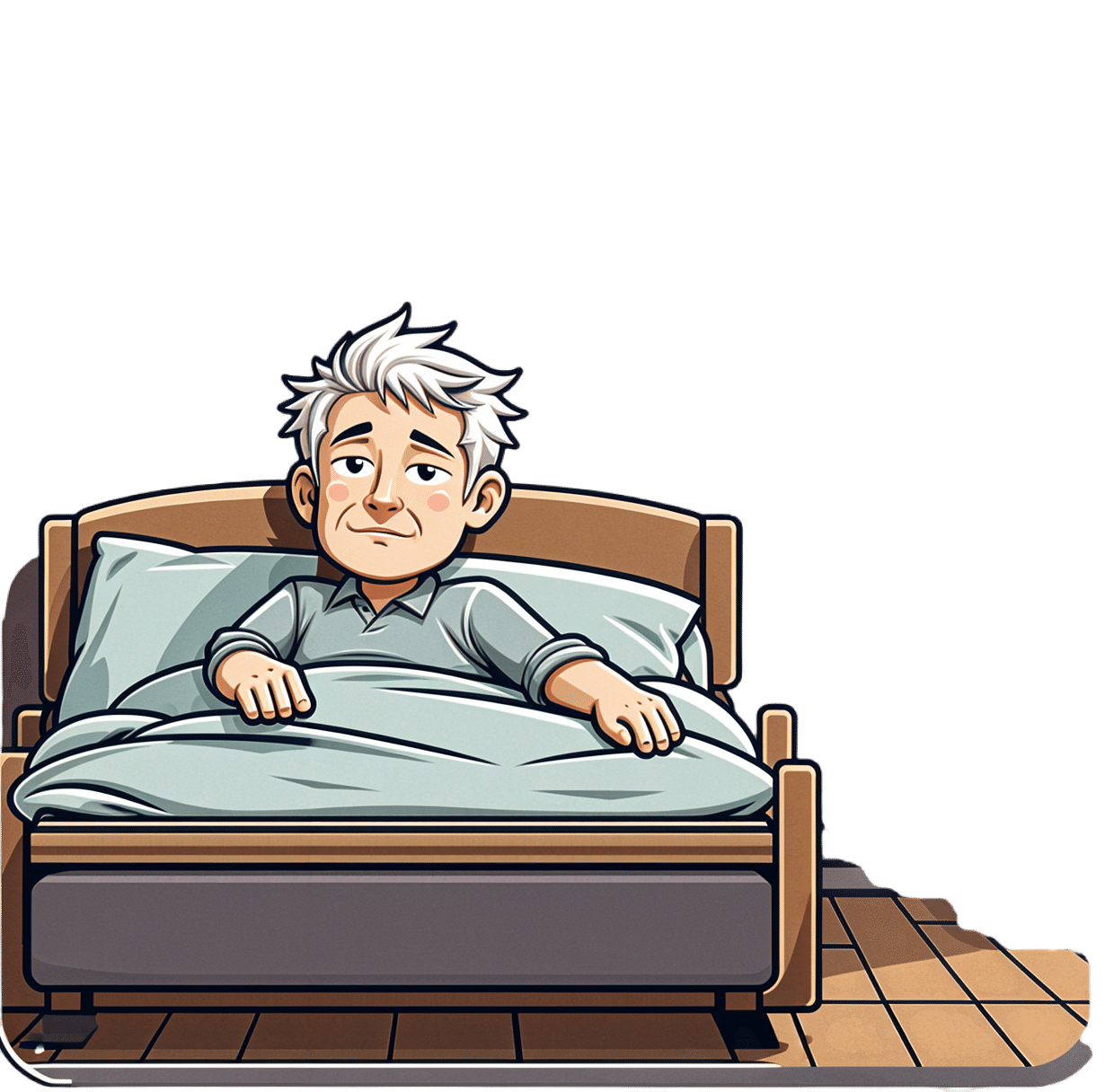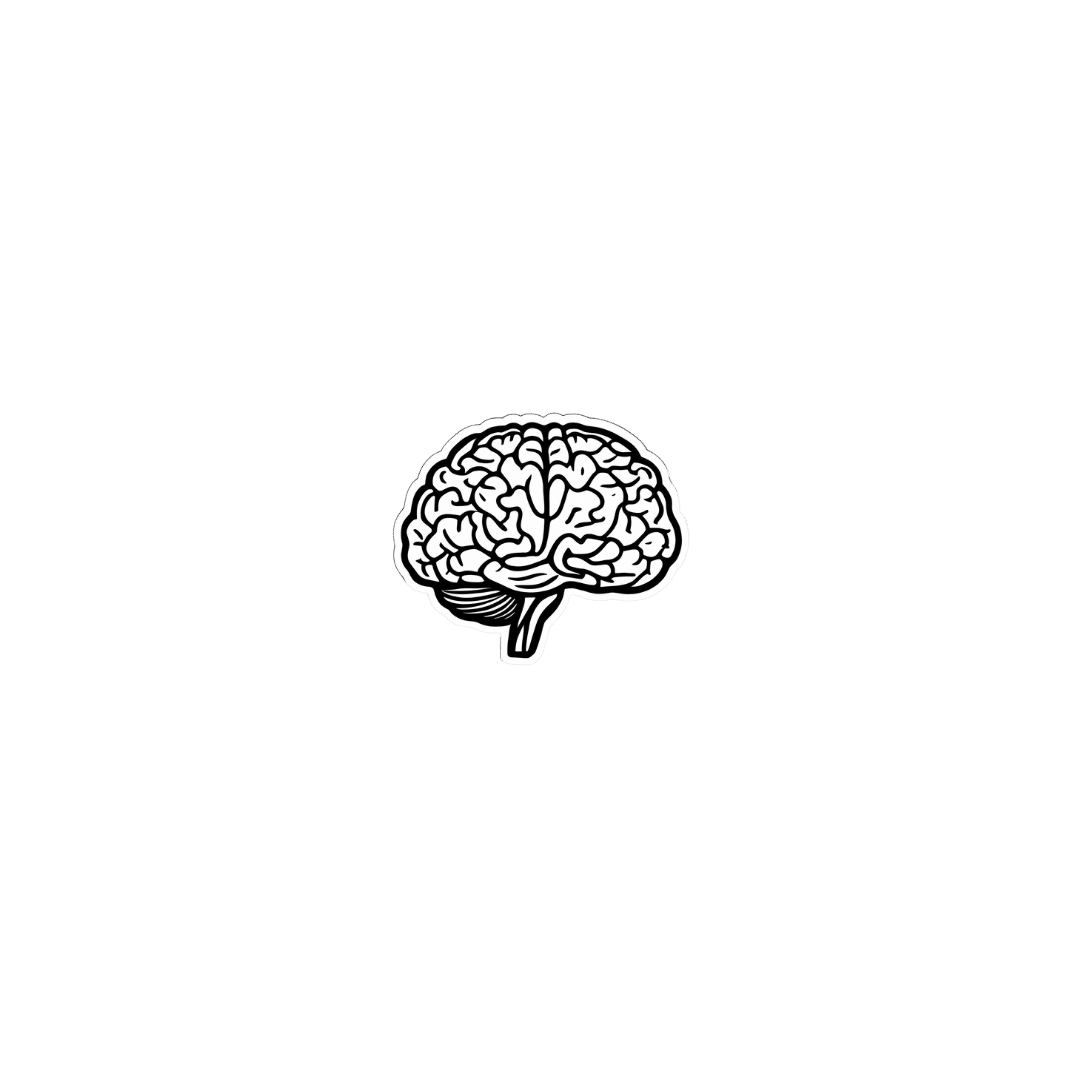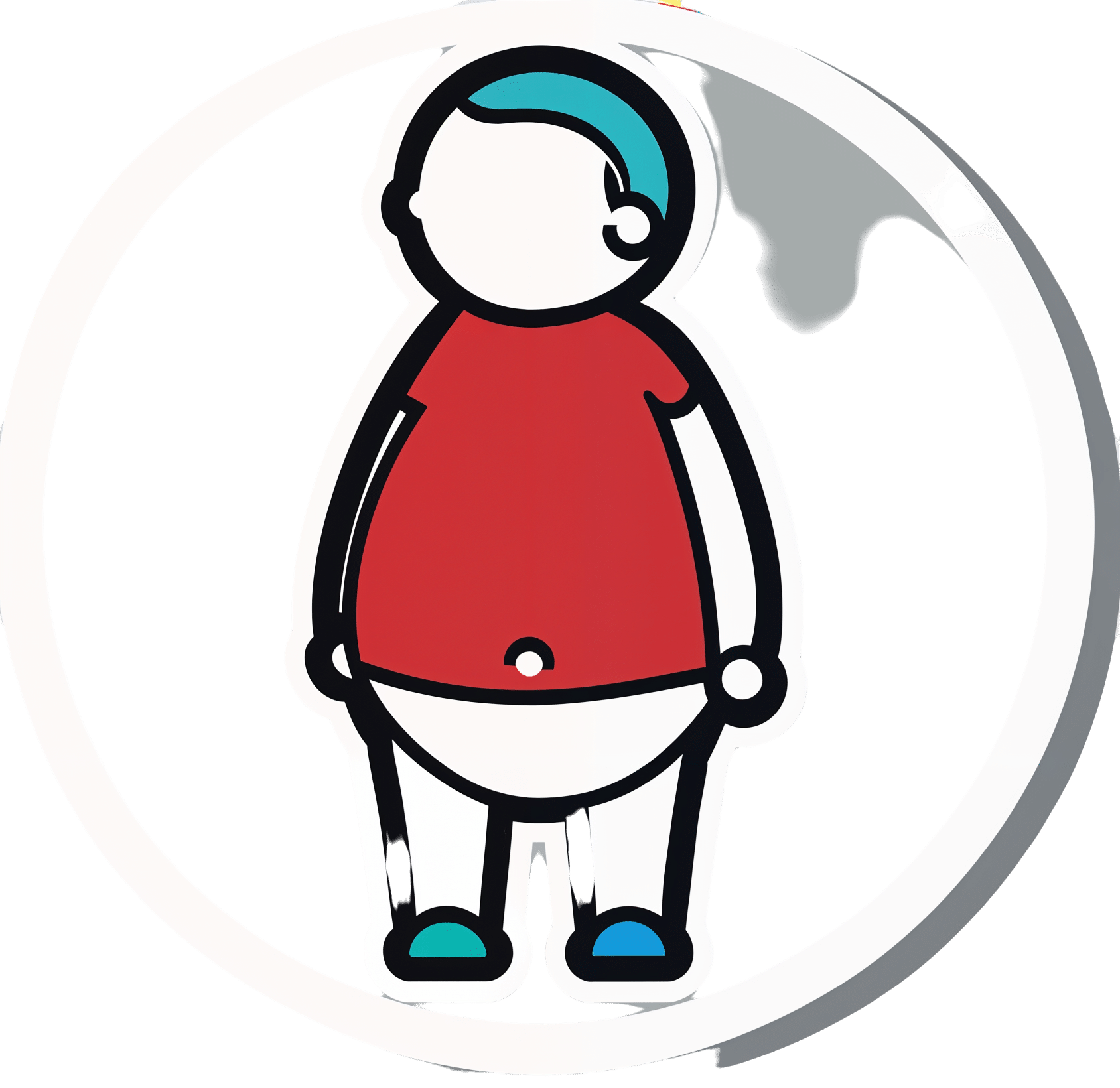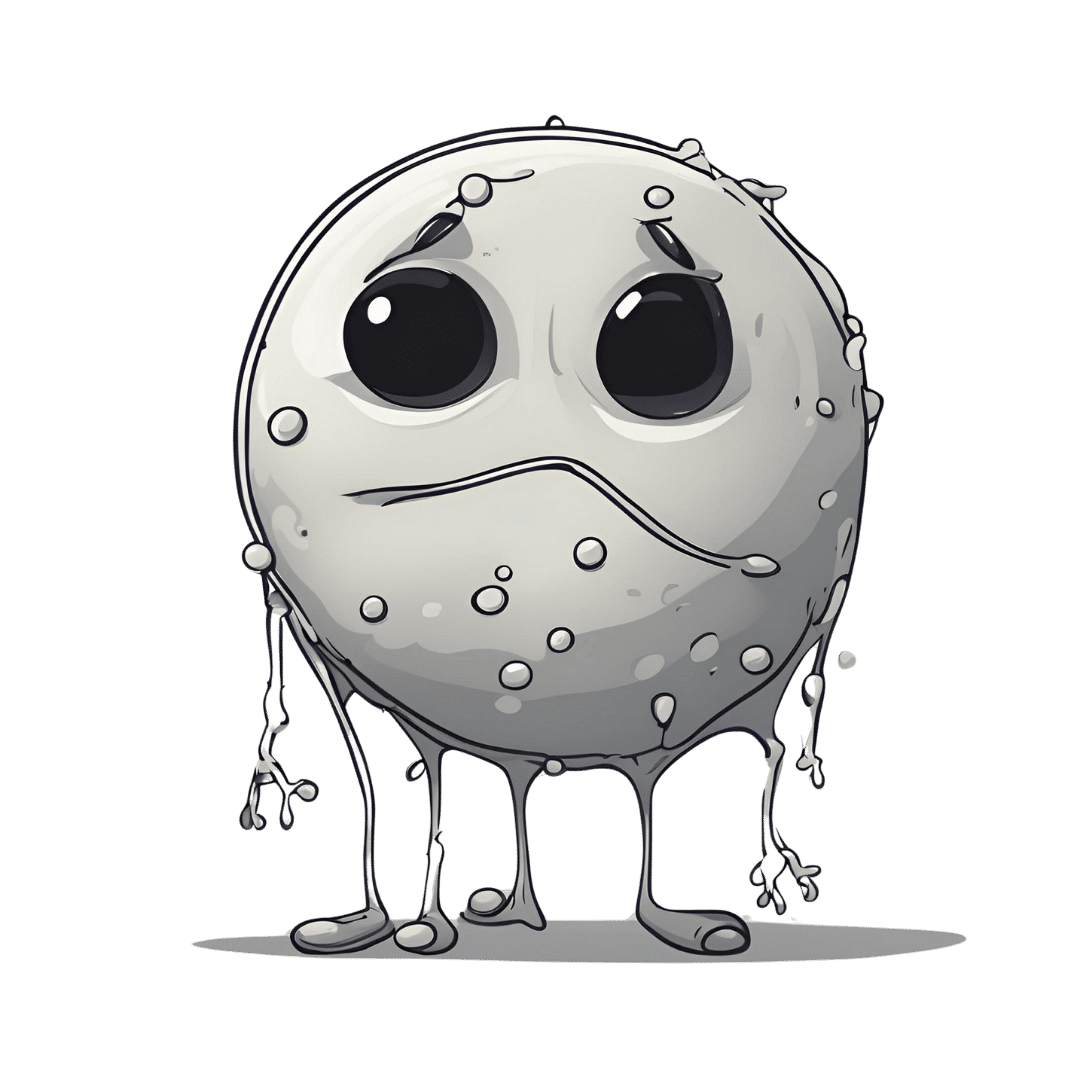
Goji Berries vs Blueberries – Which is Healthier?
10almonds is reader-supported. We may, at no cost to you, receive a portion of sales if you purchase a product through a link in this article.
Our Verdict
When comparing goji berries to blueberries, we picked the goji berries.
Why?
As you might have guessed, both are very good options:
- Both have plenty of vitamins and minerals, and/but goji berries have more. How much more? It varies, but for example about 5x more vitamin C, about 25x more iron, about 30x more calcium, about 50x more vitamin A.
- Blueberries beat goji berries with some vitamins (B, E, K), but only in quite small amounts.
- Both are great sources of antioxidants, and/but goji berries have 2–4 times the antioxidants that blueberries do.
- Goji berries do have more sugar, but since they have about 4x more sugar and 5x more fiber, we’re still calling this a win for goji berries on the glycemic index front (and indeed, the GI of goji berries is lower).
In short: blueberries are great, but goji berries beat them in most metrics.
Want to read more?
Check out our previous main features, detailing some of the science, and also where to get them:
Enjoy!
Don’t Forget…
Did you arrive here from our newsletter? Don’t forget to return to the email to continue learning!
Recommended
Learn to Age Gracefully
Join the 98k+ American women taking control of their health & aging with our 100% free (and fun!) daily emails:
-
How to Fall Asleep Faster: CBT-Insomnia Treatment
10almonds is reader-supported. We may, at no cost to you, receive a portion of sales if you purchase a product through a link in this article.
Insomnia affects a lot of people, and is even more common as we get older. Happily, therapist Emma McAdam is here with a drug-free solution that will work for most people most of the time.
Cognitive Behavioral Therapy for Insomnia (CBTI)
While people think of causes of insomnia as being things such as stress, anxiety, overthinking, disturbances, and so forth, these things affect sleep in the short term, but don’t directly cause chronic insomnia.
We say “directly”, because chronic insomnia is usually the result of the brain becoming accustomed to the above, and thus accidentally training itself to not sleep.
The remedy: cut the bad habit of staying in bed while awake. Lying in bed awake trains the brain to associate lying in bed with wakefulness (and any associated worrying, etc). In essence, we lie down, and the brain thinks “Aha, we know this one; this is the time and place for worrying, ok, let’s get to work”.
So instead: if you’re in bed and not asleep within 15 minutes, get up and do something non-stimulating until you feel sleepy, then return to bed. This may cause some short term tiredness, but it will usually correct the chronic insomnia within a week.
For more details, tips, and troubleshooting with regard to the above, enjoy:
Click Here If The Embedded Video Doesn’t Load Automatically!
Want to learn more?
You might also like to read:
How to Fall Back Asleep After Waking Up in the Middle of the Night
Take care!
Share This Post
-
What Loneliness Does To Your Brain And Body
10almonds is reader-supported. We may, at no cost to you, receive a portion of sales if you purchase a product through a link in this article.
Spoiler: it’s nothing good (but it can be addressed!)
Not something to be ignored
Loneliness raises the risk of heart disease by 29% and the risk of stroke by 32%. It also brings about higher susceptibility to illness (flu, COVID, chronic pain, etc), as well as poor sleep quality and cognitive decline, possibly leading to dementia. Not only that, but it also promotes inflammation, and premature death (comparable to smoking).
This is because the lack of meaningful social connections activates the body’s stress response, which in turn increases paranoia, suspicion, and social withdrawal—which makes it harder to seek the social interaction needed to alleviate it.
On a neurological level, cortisol levels become imbalanced, and a faltering dopamine response leads to impulsive behaviors (e.g., drinking, gambling) to try to make up for it. Decreased serotonin, oxytocin, and natural opioids reduce feelings of happiness and negate pain relief.
As for combatting it, the first-line remedy is the obvious one: connecting with others improves emotional and physical wellbeing. However, it is recommended to aim for deep, meaningful connections that make you happy rather than just socializing for its own sake. It’s perfectly possible to be lonely in a crowd, after all.
A second-line remedy is to simply mitigate the harm by means of such things as art therapy and time in nature—they can’t completely replace human connection, but they can at least improve the neurophysiological situation (which in turn, might be enough of a stop-gap solution to enable a return to human connection).
For more on all of this, enjoy:
Click Here If The Embedded Video Doesn’t Load Automatically!
Want to learn more?
You might also like to read:
How To Beat Loneliness & Isolation
Take care!
Share This Post
-
Driving under the influence of marijuana: An explainer and research roundup
10almonds is reader-supported. We may, at no cost to you, receive a portion of sales if you purchase a product through a link in this article.
Update 1: On May 16, 2024, the U.S. Department of Justice sent a proposed rule to the Federal Register to downgrade marijuana from a Schedule I to a Schedule III drug. This is the first step in a lengthy approval process that starts with a 60-day comment period.
Update 2: Two recent research studies were added to the “Studies on marijuana and driving” section of this piece on July 18, 2024.
As marijuana use continues to rise and state-level marijuana legalization sweeps the U.S., researchers and policymakers are grappling with a growing public safety concern: marijuana-impaired driving.
As of April 2023, 38 U.S. states had legalized medical marijuana and 23 had legalized its recreational use, according to the National Conference of State Legislatures. Recreational or medical marijuana measures are on the ballot in seven states this year.
The issue of marijuana-impaired driving has not been an easy one to tackle because, unlike alcohol, which has well-established thresholds of impairment, the metrics for marijuana’s effects on driving remain rather elusive.
“We don’t have that kind of deep knowledge right now and it’s not because of lack of trying,” says Dr. Guohua Li, professor of epidemiology and the founding director of the Center for Injury Science and Prevention at Columbia University.
“Marijuana is very different from alcohol in important ways,” says Li, who has published several studies on marijuana and driving. “And one of them is that the effect of marijuana on cognitive functions and behaviors is much more unpredictable than alcohol. In general, alcohol is a depressant drug. But marijuana could act on the central nervous system as a depressant, a stimulant, and a hallucinogenic substance.”
Efforts to create a breathalyzer to measure the level of THC, the main psychoactive compound found in the marijuana plant, have largely failed, because “the THC molecule is much bigger than ethanol and its behavior after ingestion is very different from alcohol,” Li says.
Currently, the two most common methods used to measure THC concentration to identify impaired drivers are blood and saliva tests, although there’s ongoing debate about their reliability.
Marijuana, a term interchangeably used with cannabis, is the most commonly used federally illegal drug in the U.S.: 48.2 million people, or about 18% of Americans reported using it at least once in 2019, according to the latest available data from the Centers for Disease Control and Prevention. Worldwide, 2.5% of the population consumes marijuana, according to the World Health Organization.
Marijuana is legal in several countries, including Canada, where it was legalized in 2018. Despite state laws legalizing cannabis, it remains illegal at the federal level in the U.S.
As states grapple with the contentious issue of marijuana legalization, the debate is not just about public health, potential tax revenues and economic interests. At the heart of the discussion is also the U.S. criminal justice system.
Marijuana is shown to have medicinal qualities and, compared with substances like alcohol, tobacco, and opioids, it has relatively milder health risks. However, it’s not risk-free, a large body of research has shown.
Marijuana consumption can lead to immediate effects such as impaired muscle coordination and paranoia, as well as longer-term effects on mental health and cognitive functions — and addiction. As its use becomes more widespread, researchers are trying to better understand the potential hazards of marijuana, particularly for younger users whose brains are in critical stages of development.
Marijuana and driving
The use of marijuana among drivers, passengers and pedestrians has increased steadily over the past two decades, Li says.
Compared with the year 2000, the proportion of U.S. drivers on the road who are under the influence of marijuana has increased by several folds, between five to 10 times, based on toxicology testing of people who died in car crashes, Li says.
A 2022 report from the National Transportation Safety Board finds alcohol and cannabis are the two most commonly detected drugs among drivers arrested for impaired driving and fatally injured drivers. Most drivers who tested positive for cannabis also tested positive for another potentially impairing drug.
“Although cannabis and many other drugs have been shown to impair driving performance and are associated with increased crash risk, there is evidence that, relative to alcohol, awareness about the potential dangers of driving after using other drugs is lower,” according to the report.
Indeed, many U.S. adults perceive daily marijuana use or exposure to its smoke safer than tobacco, even though research finds otherwise.
Several studies have demonstrated marijuana’s impact on driving.
Marijuana use can reduce the drivers’ ability to pay attention, particularly when they are performing multiple tasks, research finds. It also slows reaction time and can impair coordination.
“The combination is that you potentially have people who are noticing hazards later, braking slower and potentially not even noticing hazards because of their inability to focus on competing things on the road,” says Dr. Daniel Myran, an assistant professor at the Department of Family Medicine and health services researcher at the University of Ottawa.
In a study published in September in JAMA Network Open, Myran and colleagues find that from 2010 to 2021 the rate of cannabis-involved traffic injuries that led to emergency department visits in Ontario, Canada, increased by 475%, from 0.18 per 1,000 traffic injury emergency department visits in 2010 to 1.01 visits in 2021.
To be sure, cannabis-involved traffic injuries made up a small fraction of all traffic injury-related visits to hospital emergency departments. Out of 947,604 traffic injury emergency department visits, 426 had documented cannabis involvement.
Myran cautions the increase shouldn’t be solely attributed to marijuana legalization. It captures changing societal attitudes toward marijuana and acceptance of cannabis use over time in the lead-up to legalization. In addition, it may reflect an increasing awareness among health care providers about cannabis-impaired driving, and they may be more likely to ask about cannabis use and document it in medical charts, he says.
“When you look at the 475% increase in cannabis involvement in traffic injuries, rather than saying legalizing cannabis has caused the roads to be unsafe and is a public health disaster, it’s that cannabis use appears to be growing as a risk for road traffic injuries and that there seem to be more cannabis impaired drivers on the road,” Myran says. “Legalization may have accelerated this trend. Faced with this increase, we need to think about what are public health measures and different policy interventions to reduce harms from cannabis-impaired driving.”
Setting a legal limit for marijuana-impaired driving
Setting a legal limit for marijuana-impaired driving has not been easy. Countries like Canada and some U.S. states have agreed upon a certain level of THC in blood, usually between 1 to 5 nanograms per milliliter. Still, some studies have found those limits to be weak indicators of cannabis-impaired driving.
When Canada legalized recreational marijuana in 2018, it also passed a law that made it illegal to drive with blood THC levels of more than 2 nanograms. The penalties are more severe for blood THC levels above 5 nanograms. The blood test is done at the police station for people who are pulled over and are deemed to be drug impaired.
In the U.S., five states — Ohio, Illinois, Montana, Washington and Nevada — have “per se laws,” which set a specific amount of THC in the driver’s blood as evidence of impaired driving, according to the National Conference of State Legislatures. That limit ranges between 2 and 5 nanograms of THC per milliliter of blood.
Colorado, meanwhile, has a “permissible inference law,” which states that it’s permissible to assume the driver was under the influence if their blood THC level is 5 nanograms per milliliter or higher, according to NCSL.
Twelve states, most which have legalized some form of marijuana of use, have zero tolerance laws for any amount of certain drugs, including THC, in the body.
The remaining states have “driving under the influence of drugs” laws. Among those states, Alabama and Michigan, have oral fluid roadside testing program to screen drivers for marijuana and other drugs, according to NCSL.
In May this year, the U.S. Department of Transportation published a final rule that allows employers to use saliva testing for commercially licensed drivers, including truck drivers. The rule, which went into effect in June, sets the THC limit in saliva at 4 nanograms.
Saliva tests can detect THC for 8 to 24 hours after use, but the tests are not perfect and can results in false positives, leading some scientists to argue against using them in randomly-selected drivers.
In a 2021 report, the U.S. National Institute of Justice, the research and development arm of the Department of Justice, concluded that THC levels in bodily fluids, including blood and saliva “were not reliable indicators of marijuana intoxication.”
Studies on marijuana and driving
Over the past two decades, many studies have shown marijuana use can impair driving. However, discussions about what’s the best way to measure the level of THC in blood or saliva are ongoing. Below, we highlight and summarize several recent studies that address the issue. The studies are listed in order of publication date. We also include a list of related studies and resources to inform your audiences.
State Driving Under the Influence of Drugs Laws
Alexandra N. Origenes, Sarah A. White, Emma E. McGinty and Jon S. Vernick. Journal of Law, Medicine & Ethics, July 2024.Summary: As of January 2023, 33 states and D.C. had a driving under the influence of drugs law for at least one drug other than cannabis. Of those, 29 states and D.C. had a law specifically for driving under the influence of cannabis, in addition to a law for driving under the influence of other drugs. Four states had a driving under the influence of drug laws, excluding cannabis. Meanwhile, 17 states had no law for driving under the influence of drugs, including cannabis. “The 17 states lacking a DUID law that names specific drugs should consider enacting such a law. These states already have expressed their concern — through legislation — with drug-impaired driving. However, failure to name specific drugs is likely to make the laws more difficult to enforce. These laws may force courts and/or law enforcement to rely on potentially subjective indicators of impairment,” the authors write.
Associations between Adolescent Marijuana Use, Driving After Marijuana Use and Recreational Retail Sale in Colorado, USA
Lucas M. Neuroth, et al. Substance Use & Misuse, October 2023.Summary: Researchers use data from four waves (2013, 2015, 2017 and 2019) of the Healthy Kids Colorado Survey, including 47,518 students 15 and older who indicated that they drove. They find 20.3% of students said that they had used marijuana in the past month and 10.5% said they had driven under the influence of marijuana. They find that the availability of recreational marijuana in stores was associated with an increased prevalence of using marijuana one to two times in the past month and driving under the influence of marijuana at least once. “Over the study period, one in ten high school age drivers engaged in [driving after marijuana use], which is concerning given the high risk of motor vehicle-related injury and death arising from impaired driving among adolescents,” the authors write.
Are Blood and Oral Fluid Δ9-tetrahydrocannabinol (THC) and Metabolite Concentrations Related to Impairment? A Meta-Regression Analysis
Danielle McCartney, et al. Neuroscience & Biobehavioral Reviews, March 2022.Summary: Commonly used THC measurements may not be strong indicators of driving impairment. While there is a relationship between certain biomarkers like blood THC concentrations and impaired driving, this correlation is often weak. The study underscores the need for more nuanced and comprehensive research on this topic, especially as cannabis usage becomes more widespread and legally accepted.
The Effects of Cannabis and Alcohol on Driving Performance and Driver Behaviour: A Systematic Review and Meta-Analysis
Sarah M. Simmons, Jeff K. Caird, Frances Sterzer and Mark Asbridge. Addiction, January 2022.Summary: This meta-analysis of experimental driving studies, including driving simulations, confirms that cannabis impairs driving performance, contrary to some beliefs that it might enhance driving abilities. Cannabis affects lateral control and speed — typically increasing lane excursions while reducing speed. The combination of alcohol and marijuana appears worse than either alone, challenging the idea that they cancel each other out.
Cannabis Legalization and Detection of Tetrahydrocannabinol in Injured Drivers
Jeffrey R. Brubacher, et al. The New England Journal of Medicine, January 2022.Summary: Following the legalization of recreational marijuana in Canada, there was a notable increase in injured drivers testing positive for THC, especially among those 50 years of age or older. This rise in cannabis-related driving incidents occurred even with new traffic laws aiming to deter cannabis-impaired driving. This uptick began before legalization became official, possibly due to perceptions that cannabis use was soon-to-be legal or illegal but not enforced. The data suggests that while legalization has broad societal impacts, more comprehensive strategies are needed to deter driving under the influence of cannabis and raise public awareness about its risks.
Cannabis and Driving
Godfrey D. Pearlson, Michael C. Stevens and Deepak Cyril D’Souza. Frontiers in Psychiatry, September 2021.Summary: Cannabis-impaired driving is a growing public health concern, and studies show that such drivers are more likely to be involved in car crashes, according to this review paper. Drivers are less affected by cannabis than they are by alcohol or cocaine, but the problem is expected to escalate with increasing cannabis legalization and use. Unlike alcohol, THC’s properties make it challenging to determine direct impairment levels from testing results. Current roadside tests lack precision in detecting genuine cannabis-impaired drivers, leading to potential wrongful convictions. Moreover, there is a pressing need for research on the combined effects of alcohol and cannabis on driving, as well as the impact of emerging popular forms of cannabis, like concentrates and edibles. The authors recommend public awareness campaigns about the dangers of driving under the influence of cannabis, similar to those against drunk driving, to address misconceptions. Policymakers should prioritize science-based decisions and encourage further research in this domain.
Demographic And Policy-Based Differences in Behaviors And Attitudes Towards Driving After Marijuana Use: An Analysis of the 2013–2017 Traffic Safety Culture Index
Marco H. Benedetti, et al. BMC Research Notes, June 2021.Summary: The study, based on a U.S. survey, finds younger, low-income, low-education and male participants were more tolerant of driving after marijuana consumption. Notably, those in states that legalized medical marijuana reported driving after use more frequently, aligning with studies indicating a higher prevalence of THC detection in drivers from these states. Overall, while the majority perceive driving after marijuana use as dangerous, not all research agrees on its impairment effects. Existing studies highlight that marijuana impacts motor skills and executive functions, yet its direct correlation with crash risk remains debated, given the variations in individual tolerance and how long THC remains in the system.
Driving Under the Influence of Cannabis: A Framework for Future Policy
Robert M. Chow, et al.Anesthesia & Analgesia, June 2019.Summary: The study presents a conceptual framework focusing on four main domains: legalization, driving under the influence of cannabis, driver impairment, and motor vehicle accidents. With the growing legalization of cannabis, there’s an anticipated rise in cannabis-impaired driving cases. The authors group marijuana users into infrequent users who show significant impairment with increased THC blood levels, chronic users with minimal impairment despite high THC levels, and those with consistent psychomotor deficits. Current challenges lie in the lack of standardized regulation for drivers influenced by cannabis, primarily because of state-to-state variability and the absence of a federal statutory limit for blood THC levels. European nations, however, have established thresholds for blood THC levels, ranging from 0.5 to 50.0 micrograms per liter depending on whether blood or blood serum are tested. The authors suggest the combined use of alcohol and THC blood tests with a psychomotor evaluation by a trained professional to determine impairment levels. The paper stresses the importance of creating a structured policy framework, given the rising acceptance and use of marijuana in society.
Additional research
Cannabis-Involved Traffic Injury Emergency Department Visits After Cannabis Legalization and Commercialization
Daniel T. Myran, et al. JAMA Network Open, September 2023.Driving Performance and Cannabis Users’ Perception of Safety: A Randomized Clinical Trial
Thomas D. Marcotte, et al. JAMA Psychiatry, January 2022.Medicinal Cannabis and Driving: The Intersection of Health and Road Safety Policy
Daniel Perkins, et al. International Journal of Drug Policy, November 2021.Prevalence of Marijuana Use Among Trauma Patients Before and After Legalization of Medical Marijuana: The Arizona Experience
Michael Levine, et al. Substance Abuse, July 2021.Self-Reported Driving After Marijuana Use in Association With Medical And Recreational Marijuana Policies
Marco H. Benedetti, et al. International Journal of Drug Policy, June 2021.Cannabis and Driving Ability
Eric L. Sevigny. Current Opinion in Psychology, April 2021.The Failings of per se Limits to Detect Cannabis-Induced Driving Impairment: Results from a Simulated Driving Study
Thomas R. Arkell, et al. Traffic Injury Prevention, February 2021.Risky Driving Behaviors of Drivers Who Use Alcohol and Cannabis
Tara Kelley-Baker, et al. Transportation Research Record, January 2021.Direct and Indirect Effects of Marijuana Use on the Risk of Fatal 2-Vehicle Crash Initiation
Stanford Chihuri and Guohua Li. Injury Epidemiology, September 2020Cannabis-Impaired Driving: Evidence and the Role of Toxicology Testing
Edward C. Wood and Robert L. Dupont. Cannabis in Medicine, July 2020.Association of Recreational Cannabis Laws in Colorado and Washington State With Changes in Traffic Fatalities, 2005-2017
Julian Santaella-Tenorio, et al. JAMA Internal Medicine, June 2020.Marijuana Decriminalization, Medical Marijuana Laws, and Fatal Traffic Crashes in US Cities, 2010–2017
Amanda Cook, Gregory Leung and Rhet A. Smith. American Journal of Public Health, February 2020.Cannabis Use in Older Drivers in Colorado: The LongROAD Study
Carolyn G. DiGuiseppi, et al. Accident Analysis & Prevention, November 2019.Crash Fatality Rates After Recreational Marijuana Legalization in Washington and Colorado
Jayson D. Aydelotte, et al. American Journal of Public Health, August 2017.Marijuana-Impaired Driving: A Report to Congress
National Highway Traffic Safety Administration, July 2017Interaction of Marijuana And Alcohol on Fatal Motor Vehicle Crash Risk: A Case–Control Study
Stanford Chihuri, Guohua Li and Qixuan Chen. Injury Epidemiology, March 2017.US Traffic Fatalities, 1985–2014, and Their Relationship to Medical Marijuana Laws
Julian Santaella-Tenorio, et al. American Journal of Public Health, February 2017.Delays in DUI Blood Testing: Impact on Cannabis DUI Assessments
Ed Wood, Ashley Brooks-Russell and Phillip Drum. Traffic Injury Prevention, June 2015.Establishing Legal Limits for Driving Under the Influence of Marijuana
Kristin Wong, Joanne E. Brady and Guohua Li. Injury Epidemiology, October 2014.Cannabis Effects on Driving Skills
Rebecca L. Hartman and Marilyn A. Huestis. Clinical Chemistry, March 2014.Acute Cannabis Consumption And Motor Vehicle Collision Risk: Systematic Review of Observational Studies and Meta-Analysis
Mark Asbridge, Jill A. Hayden and Jennifer L. Cartwright. The BMJ, February 2012.Resources for your audiences
The following resources include explainers from federal agencies and national organizations. You’re free to use images and graphics from federal agencies.
- CDC’s main marijuana page.
- CDC’s marijuana data and statistics.
- Marijuana Drug Facts from the National Institute on Drug Abuse.
- Health Effects of Marijuana from the CDC.
- Learn About Marijuana Risks from the Substance Abuse and Mental Health Services Administration.
- Marijuana and Lung Health from the American Lung Association.
- Substance Use Disorder 101 from the U.S. Department of Health & Human Services.
- What You Need To Know About Marijuana Use and Driving from the CDC.
- Does marijuana use affect driving? from the National Institute on Drug Abuse.
- Drug-Impaired Driving from the National Highway Traffic Safety Administration.
This article first appeared on The Journalist’s Resource and is republished here under a Creative Commons license.
Share This Post
Related Posts
-
Workout Advice For Busy People
10almonds is reader-supported. We may, at no cost to you, receive a portion of sales if you purchase a product through a link in this article.
Hampton at Hybrid Calisthenics always has very sound advice in his uplifting videos, and this one’s no exception:
Key tips for optimizing workouts without burning out
“We all have the same 24 hours” is a folly when in fact, some of us have more responsibilities and/or other impediments to getting things done (e.g. disabilities).
A quick word on disabilities first: sometimes people are quick to point out Paralympian athletes, and “if they can do it, so can you!” and forget that these people are in the top percentile of the top percentile of the top percentile of human performance. If you wouldn’t disparagingly say “if Simone Biles/Hussein Bolt/Michael Phelps can do it, so can you”, then don’t for Paralympians either 😉
Now, as for Hampton’s advice, he recommends:
Enjoy short, intense workouts:
- You can get effective results in under 30 minutes (or even just a few minutes per day) with compound exercises (e.g., squats, pull-ups).
- Focus on full-body movements also saves time!
- Push closer to failure when possible to maximize efficiency. It’s the last rep where most of the strength gains are made! Same deal with cardiovascular fitness, too. Nevertheless, do take safety into account in both cases, of course.
Time your rest periods:
- Resting for 2–3 minutes between sets ensures optimal recovery.
- Avoid getting distracted during rest by setting a timer to stay focused.
- 10almonds tip: use this time to practice a mindfulness meditation. That will greatly reduce the chance of you becoming distracted.
Remember holistic fitness:
- Fitness isn’t just about exercise; diet, sleep, and stress management are equally important for your fitness as much as for the rest of your health.
- Better sleep and reduced stress will help you exercise more consistently and avoid junk food.
Address burnout:
- If feeling too exhausted to apply these tips, focus on getting better rest and reducing stress first.
- Taking a short break to reset can help in the long run.
For more on all of this, enjoy:
Click Here If The Embedded Video Doesn’t Load Automatically!
Want to learn more?
You might also like to read:
- How To Do High Intensity Interval Training (Without Wrecking Your Body)
- How To Rest More Efficiently (Yes, Really)
Take care!
Don’t Forget…
Did you arrive here from our newsletter? Don’t forget to return to the email to continue learning!
Learn to Age Gracefully
Join the 98k+ American women taking control of their health & aging with our 100% free (and fun!) daily emails:
-
Visceral Belly Fat & How To Lose It
10almonds is reader-supported. We may, at no cost to you, receive a portion of sales if you purchase a product through a link in this article.
Visceral Belly Fat & How To Lose It
We’ve talked before about how waist circumference is a much more useful indicator of metabolic health than BMI.
So, let’s say you’ve a bit more around the middle than you’d like, but it stubbornly stays there. What’s going on underneath what you can see, why is it going on, and how can you get it to change?
What is visceral fat?
First, let’s talk about subcutaneous fat. That’s the fat directly under your skin. Women usually have more than men, and that’s perfectly healthy (up to a point); it’s supposed to be that way. We (women) will tend to accumulate this mostly in places such as our breasts, hips, and butt, and work outwards from there. Men will tend to put it on more to the belly and face.
Side-note: if you’re undergoing (untreated) menopause, the changes in your hormone levels will tend to result in more subcutaneous fat to the belly and face too. That’s normal, and/but normal is not always good, and treatment options are great (with hormone replacement therapy, HRT, topping the list).
Visceral fat (also called visceral adipose tissue), on the other hand, is the fat of the viscera—the internal organs of the abdomen.
So, this is fat that goes under your abdominal muscles—you can’t squeeze this (directly).
So what can we do?
Famously “you can’t do spot reduction” (lose fat from a particular part of your body by focusing exercises on that area), but that’s about subcutaneous fat. There are things you can do that will reduce your visceral fat in particular.
Some of these advices you may think “that’s just good advice for losing fat in general” and it is, yes. But these are things that have the biggest impact on visceral fat.
Cut alcohol use
This is the biggie. By numerous mechanisms, some of which we’ve talked about before, alcohol causes weight gain in general yes, but especially for visceral fat.
Get better sleep
You might think that hitting the gym is most important, but this one ranks higher. Yes, you can trim visceral fat without leaving your bed (and even without getting athletic in bed, for that matter). Not convinced?
- Here’s a study of 101 people looking at sleep quality and abdominal adiposity
- Oh, and here’s a meta-analysis with 56,000 people (finding the same thing), in case that one study didn’t convince you.
So, the verdict is clear: you snooze, you lose (visceral fat)!
Tweak your diet
You don’t have to do a complete overhaul (unless you want to), but a few changes can make a big difference, especially:
- Getting more fiber (this is the biggie when it comes to diet)
- Eating less sugar (not really a surprise, but relevant to mention)
- Eat whole foods (skip the highly processed stuff)
If you’d like to learn more and enjoy videos, here’s an informative one to get you going!
Click Here If The Embedded Video Doesn’t Load Automatically! Don’t Forget…
Did you arrive here from our newsletter? Don’t forget to return to the email to continue learning!
Learn to Age Gracefully
Join the 98k+ American women taking control of their health & aging with our 100% free (and fun!) daily emails:
-
How To Be 7.5x More Likely To Develop Chronic Fatigue Syndrome
10almonds is reader-supported. We may, at no cost to you, receive a portion of sales if you purchase a product through a link in this article.
First, what is it?
Many more people have chronic fatigue, which is the symptom of being exhausted all the time, than have chronic fatigue syndrome (CFS) which is the illness of myalgic encephalomyelitis (ME).
This is because fatigue can be a symptom of many, many other conditions, and can be heavily influenced by lifestyle factors too.
A lot of the advice for dealing with chronic fatigue is often the same in both cases, but some will be different, because for example:
- If your fatigue is from some other condition, that condition probably impacts what lifestyle factors you are (and are not) able to change, too
- If your fatigue is from lifestyle factors, that hopefully means you can change those and enjoy less fatigue…
- But if it’s not from lifestyle factors, as in ME/CFS, then advice to “exercise more” etc is not going to help so much.
There are ways to know the difference though:
Check out: Do You Have Chronic Fatigue Syndrome?
The chronic disease pipeline
While it had been strongly suspected that COVID infection could lead to CFS, with long COVID having chronic fatigue as one of its characteristic symptoms, a research team led by Dr. Suzanne Vernon has now established the nature of the relationship.
It was a large (n=13,224) longitudinal observational cohort study of people with no pre-existing ME/CFS, grouped according to their COVID infection status:
- acute infected, enrolled within 30 days of infection or enrolled as uninfected who became infected (n=4,515)
- post-acute infected, enrolled greater than 30 days after infection (n=7,270)
- uninfected (n=1,439).
(to be clear, that last means “never infected”, or else they would be in group 2)
Note: people who had COVID and were hospitalized for it were excluded from the study, so this risk is the risk represented by even just more “moderate” infections.
What they found:
❝The proportion of all RECOVER-Adult participants that met criteria for ME/CFS following SARS-CoV-2 infection was 4.5% (531 of 11,785) compared to 0.6% (9 of 1439) in uninfected participants.❞
There are then different numbers if we look per 100 person-years, as the study also did—in which case, we get a re-modelled increase in risk of 5x instead of 7.5x, but a) that’s still not good b) the “here-and-now” figures of 4.5% vs 0.6% are also relevant.
Read in full: Incidence and Prevalence of Post-COVID-19 Myalgic Encephalomyelitis: A Report from the Observational RECOVER-Adult Study
The killer nobody wants to talk about anymore
Of course, as we all know the pandemic is over, because politicians declared it so, which is very reassuring.
Nevertheless, COVID is currently the still 4th leading cause of death in the US, placing it higher than stroke, Alzheimer’s, diabetes, and others.
See also: Emergency or Not, Covid Is Still Killing People. Here’s What Doctors Advise to Stay Safe
So, while it’s very good to take care of our hearts, brains, blood sugars, and so forth, let’s at the very least continue to keep on top of our vaccinations, avoid enclosed crowded spaces where possible, etc.
And for extra boosts to one’s chances: Why Some People Get Sick More (And How To Not Be One Of Them)
What if I do get (or already have) long COVID and/or ME/CFS?
Well, that is definitely going to suck, but there are still some things that can be done.
Here’s a big one: How To Eat To Beat Chronic Fatigue ← this will not, of course, cure you, but it’s a way of getting maximum nutrition for minimum effort, given that for someone with chronic fatigue, effort is a very finite resource that must be used sparingly
Finally, here are some further resources:
Support For Long COVID & Chronic Fatigue
Take care!
Don’t Forget…
Did you arrive here from our newsletter? Don’t forget to return to the email to continue learning!
Learn to Age Gracefully
Join the 98k+ American women taking control of their health & aging with our 100% free (and fun!) daily emails:

